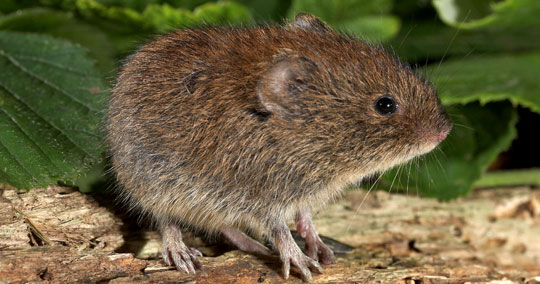Vole Control Tips to Preserve Your Yard and Gardens
Vole Control Tips to Preserve Your Yard and Gardens
Blog Article
Comprehensive Guide to Reliable Vole Parasite Control: Problem Recognition and Treatment Methods
In the world of efficient insect control, vole infestations posture an unique obstacle that requires a strategic approach. These tiny rodents, typically mistaken for computer mice, can damage yards, lawns, and crops if left uncontrolled. Determining the indicators of vole visibility and carrying out targeted treatment techniques are important components of a successful pest monitoring plan. By checking out the nuances of vole actions, recognizing essential signs of infestation, and reviewing an array of control alternatives, one can create a comprehensive method to combat these elusive insects.
Understanding Vole Behavior
Vole habits is identified by their burrowing practices and fast recreation prices, making them a difficult insect to regulate properly. These tiny rodents usually create complex passage systems underground, utilizing them for sanctuary, food storage space, and transport. Voles are herbivores, consuming a range of plants, bulbs, grasses, and roots, which can trigger substantial damages to gardens, orchards, and lawns. Their quick reproductive rate further complicates control initiatives, with ladies efficient in producing numerous clutters in a solitary year, each consisting of numerous offspring.
Understanding vole actions is critical for efficient parasite control techniques. By recognizing their burrow locations, checking feeding areas, and carrying out targeted control approaches, such as trapping or environment modification, vole invasions can be taken care of successfully.
Signs of Vole Invasion

Prevention Approaches
Carrying out effective avoidance strategies is critical in minimizing vole problems and securing plant life from their damaging feeding behaviors. To prevent vole invasions, it is vital to begin by removing possible food sources and shelter.
Consistently evaluating the residential property for indications of vole activity, such as runways and delve openings, is critical for early discovery and punctual action. If vole activity is believed, consider using traps or repellents purposefully placed near their pathways.
Non-Lethal Control Techniques
To properly manage vole populaces while focusing on gentle approaches, non-lethal control techniques supply useful services for lowering vole damages in landscapes and gardens. One efficient approach is the usage of physical obstacles such as equipment cloth or cable mesh to secure at risk plants. These barriers can be buried a minimum of 12 inches curved and deep at a 90-degree angle to prevent voles from burrowing underneath. In addition, environment alteration can hinder voles by lowering their liked food resources and concealing areas. Preserving a well-mowed yard, eliminating particles, and maintaining plants trimmed can make the atmosphere much less enticing to voles.

Lethal Control Options
One efficient method he has a good point for resolving vole problems in yards and landscapes entails the tactical use of dangerous control alternatives. When faced with an extreme vole infestation that non-lethal methods have actually fallen short to consist of, executing lethal control measures ends up being important. In general, when employing lethal control options, it is essential to do so sensibly and in conformity with local policies to efficiently handle vole problems.
Final Thought
To conclude, efficient vole bug control needs a comprehensive understanding of vole actions, identification of indicators of invasion, execution of prevention techniques, and use of both deadly and non-lethal control methods. By incorporating these approaches, people can effectively manage vole populations and secure their building from damage. It is very important to address vole problems promptly to avoid more concerns and lessen the effect on the surrounding atmosphere.
Offered the intricate tunnel systems and fast recreation rates characteristic of voles, identifying the indicators of vole infestation ends up being essential in efficient parasite control. One of the primary indications of vole existence is the visibility of surface area runways or trails in lawn or snow, commonly concerning 1-2 inches large, created as voles travel between their burrows and food resources.To properly manage vole populations while prioritizing humane methods, non-lethal control techniques use sensible solutions for decreasing vole damages in landscapes and gardens.One effective method for attending to vole invasions in gardens and landscapes involves the strategic use of dangerous control choices. vole control.In conclusion, effective vole pest control requires a comprehensive understanding of vole habits, identification of signs of infestation, execution next of prevention techniques, and use of both non-lethal and dangerous control techniques
Report this page